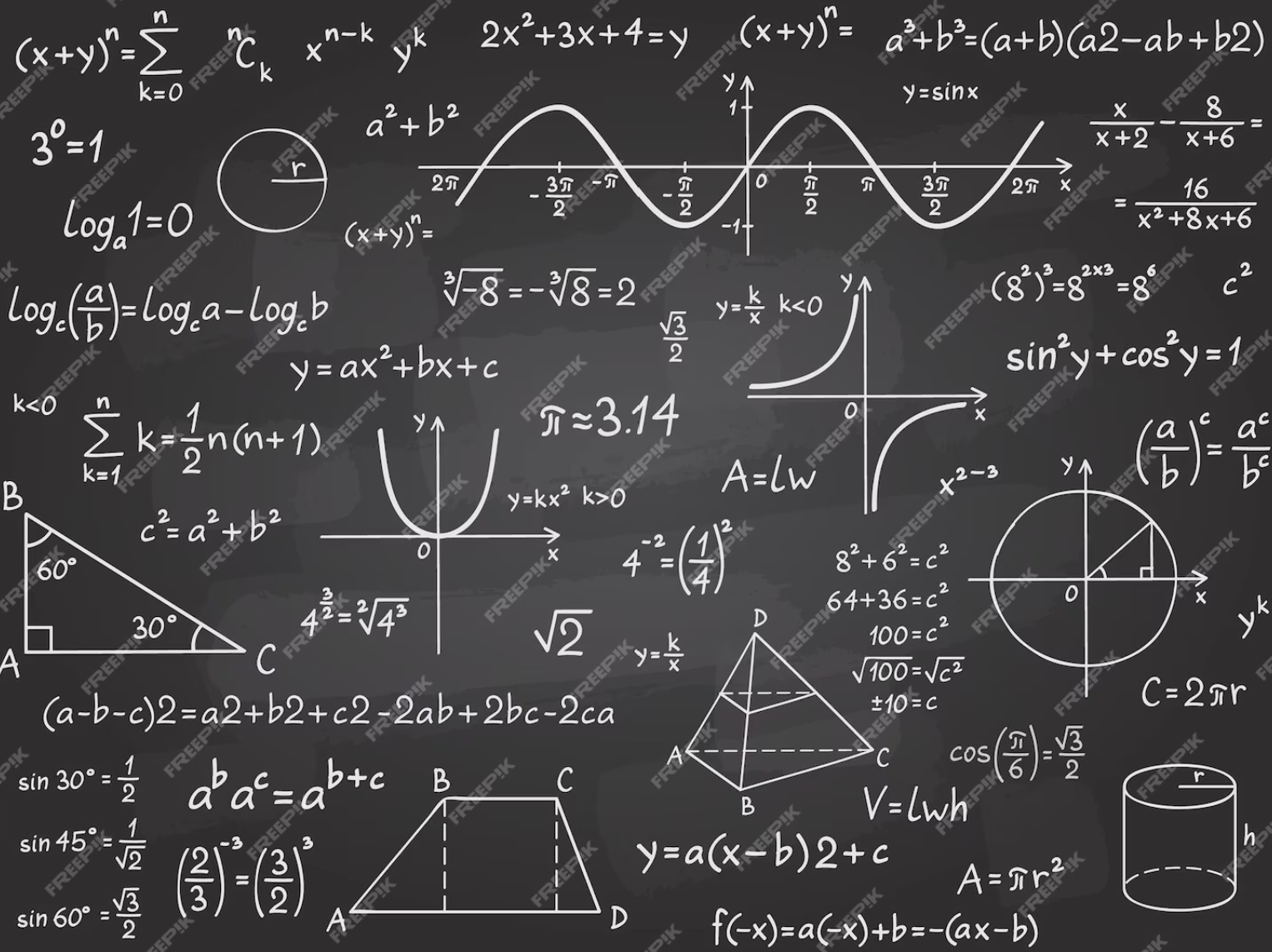
Taken from: https://es.123rf.com/photo_193642872_fondo-de-elementos-de-matem%C3%A1ticas-de-dibujos-animados-educaci%C3%B3n.html
PROFESOR: Juan Diego Arias Zuñiga
EMAIL INSTITUCIONAL: juan.arias.z@gmail.com
HOURLY INTENSITY BY CYCLE (HIC): 5
GRADE: 8 Track B (MYP Year 3)
PERIOD: 1
- INTRODUCTION
The study of mathematics is a fundamental part of a balanced education. It promotes a powerful universal language, analytical reasoning and problem-solving skills that contribute to the development of logical, abstract and critical thinking. Mathematics can help make sense of the world and allows phenomena to be described in precise terms. It also promotes careful analysis and the search for patterns and relationships, skills necessary for success both inside and outside the classroom. Mathematics, then, should be accessible to and studied by all students.
- GENERAL OBJECTIVES
At the end of this second period, the general objective encompasses the following:
● Enjoy mathematics, develop your curiosity about it, and begin to appreciate its elegance and the possibilities it offers.
● Develop an understanding of the principles and nature of mathematics.
● Communicate clearly and confidently in a variety of contexts.
● Develop logical, critical, and creative thinking.
● Apply and transfer skills to a wide range of real-world situations, other areas of knowledge, and future developments.
● Appreciate how technological advances have influenced advances in mathematics and vice versa.
● Develop the knowledge, skills, and attitudes necessary to delve deeper into the study of mathematics.
● Develop the ability to critically reflect on your own work and that of others.
- COMPETENCES / ABILITIES TO DEVELOP (depending on the subject)
● Understanding: MYP 3 students should be able to understand mathematical concepts and principles and apply them to solve problems and make sense of real-world situations.
● Reasoning: MYP 3 students should be able to reason logically and critically, and to make connections between mathematical concepts and other areas of knowledge.
● Problem-solving: MYP 3 students should be able to use mathematical concepts and skills to solve a variety of problems, including those that are unfamiliar or complex.
● Communication: MYP 3 students should be able to communicate mathematical ideas and solutions clearly and effectively, using appropriate mathematical notation and language.
● Reflection: MYP 3 students should be able to reflect on their learning, evaluate their understanding, and identify areas for improvement.
● Applying: MYP 3 students should be able to apply mathematical concepts and skills in real-world contexts, such as in the context of space and time.
- METHODOLOGY
The methodology includes the following tools:
● Workshops
● Formative assessments
● Summative assessment
● Digital textbook
● Use of mathematical software.
- CONTENT AND CONCEPTS
PERIOD TOPIC / UNIT CONTENT Sub Topics DURATION (In hours of 55min) 1st Unit 1: Arithmetic Exponent laws and radication Simplification of expressions with exponents PEMDAS: with advanced level including all basic operations 40 Unit 2: Algebra Laws of Exponents with Algebraic Expressions The four operations with algebraic expressions Remarkable products and quotients Factoring: common factor and trinomials Equations with like terms 30 2nd Unit 3: Geometry Pythagorean Theorem Surface area of prisms Surface area of composite figures Volume of polyhedra and round bodies 30 Unit 4: Statistics Calculate the mean, median and mode, and choose the best measure of central tendency. Measures of dispersion Box and whisker plots Representing data using a box-and-whisker plot 25
- EVALUATION PROCESS
|
Formative evaluation |
- Workshops - Worksheets - Quizzes - Participation in class |
|
Summative evaluation |
- Unit project - Midterm examination - Final examination |
|
Evaluation Criteria |
Percentages |
|
25% |
|
25% |
|
25% |
|
25% |
- RESOURCES
|
Resources |
|
|
Technological |
- Video lessons - PP presentations - Complementary texts - Simulations - Animations |
|
Bibliographic |
- McSeveny, Alan; Conway, Rob; et al. International Mathematics for the Middle Years 3. Pearson Education Australia, 2007. |
|
Physical |
- Classroom - Videobin - Whiteboard - Notebook, pen and pencil - Electronic device |
|
Behavioral recommendations for the proper development of the class |
- Respecting when someone is participating - Raising their hand when the student wants to say something - Following the teacher instructions, especially during formative and summative assessments in order to avoid violating school rules - Letting the teacher know if they won’t be able to attend class ahead of time |

- Profesor: Juan Diego Arias Zuniga
- Profesor: Santiago Leon Duque Joven